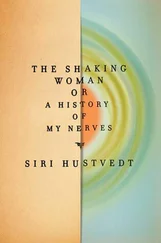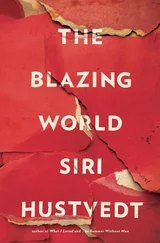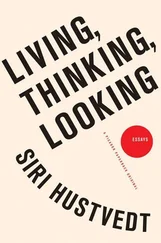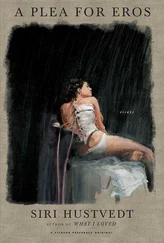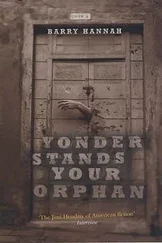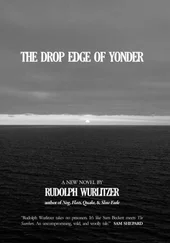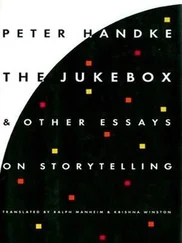I now live in Brooklyn, the place that nobody visits but where lots of people live. It is more ethnically diverse than Manhattan. The buildings are lower. We have more trees. I have zealously attached myself to my neighborhood, Park Slope, and defend it loyally. But all the time I’ve lived in Brooklyn, I’ve been writing about other places. I wrote a book called The Blindfold here, about a young graduate student who lives near Columbia and has a number of peculiar adventures. She and I aren’t the same person, but she’s close to me. And I put her in my old apartment, the one I rented on West 109th Street. When I wrote her stories, I saw her in my apartment and on the streets I knew so well. What she did wasn’t what I had done, but I don’t think I could have written that book had I not put her there, and I couldn’t have written it had I still been living in that building.
5
Long before I had heard about the New Critics or structuralism or deconstruction, teachers liked to talk about “setting” as one of the elements of fiction. It went along with “theme” and “character.” I can’t remember how Paul and I started our discussion of place in fiction or how we arrived at his startling comment about Pride and Prejudice. But I clearly remember him saying that Austen’s novel had taken place in his parents’ living room in New Jersey. Although any self-respecting junior high school teacher would have scoffed at such a remark about “setting,” I realized I had done the same thing while reading Céline’s novel Death on the Installment Plan. When Ferdinand finally takes refuge in his uncle’s house, I imagined him in my paternal grandparents’ little white house outside of Cannon Falls. Ferdinand says, “Yes Uncle,” in the small bedroom on the ground floor off the living room. The disparities between a gentry drawing room in England in the late eighteenth century and a suburban living room in New Jersey in the middle of the twentieth, or the ones between the French countryside in the early part of this century and the rural Midwest, are obvious. What is remarkable to me is that I had to think about it to know what I had done. When you read, you see. The images aren’t manufactured with effort. They simply appear to you through the experience of the text and are rarely questioned. The pictures conjured are enough to push you forward and are to a large extent, I think, like my image of the word yonder. They serve a function. And like the picture I carry with me of my uncle talking to his colleague in the Underground, they are not fully fleshed out. Although I can imagine my uncle’s face because I knew him when he was alive, the schoolteacher is a blur except for his bald head.
Fictional characters are not constantly trampling over home territory in my mind, however. Often the source of the image is less clear. Middlemarch is a book I’ve read several times, and when Dorothea is in Rome with Casaubon, I always have the same picture of it. This is significant, because I read the book both before and after I actually visited Rome, and the real city didn’t disturb in any way the imaginary one I had provided for Dorothea. Eliot’s Rome in Middlemarch is for me essentially a stage set. The walls of the empty and dead city are built of cardboard that has been painted to look like stone. While the image is wrongheaded in some way, what I see is architecture as metaphor. Dorothea’s terrible mistake is that she sees truth and power in what is false and impotent, and my artificial Rome extends the discovery of her wedding trip to the city where it occurs. Every time I read anything, I loot the world with luxurious abandon, robbing from real places and unreal ones, snatching images from movies, from postcards and paintings and even cartoons. And when I think of a book, especially one that is dear to me, I see those stolen places again, and they move me. There is a reason, after all, why Paul imagined the elaborate social intercourse and moral drama of Austen in his parents’ living room. It was clearly the site for him of similar exchanges. Things happened in that living room. As for why Ferdinand’s final refuge in the country belongs to my grandparents’ house, it is for me the place of my father, and after that poor boy’s ridiculous and heartbreaking adventures, he finds comfort at last from a paternal figure — his uncle.
The place of reading is a kind of yonder world, a place that is neither here nor there but made up of the bits and pieces of experience in every sense, both real and fictional, two categories that become harder to separate the more you think about them. When I was doing research for a professor as a graduate student, a job that paid my tuition and fees, I read excerpts from diaries recorded during Captain Cook’s legendary voyages. On the expedition, both captain and crew saw a volcano. This volcano was described separately by Cook himself and by a young man aboard ship. The difference between those descriptions astonished me. Cook reports on the volcano in the cool, scientific prose of the Enlightenment, but the young man describes the same sight in rapturous tones already coded by Romanticism. The two looked in the same direction, but they didn’t see the same event. Each had his own language for seeing, and that language created his vision. We all inherit vision just as they did — two men who stood side by side but were nevertheless separated by an intellectual chasm. It is almost impossible for us as residents of the Western world to imagine a pre-Romantic view of nature. My feeling for mountainous western Norway, undoubtedly shaped by the history of my family there, is also influenced by Romanticism. People simply don’t see mountains as annoying impasses anymore. They breathe in the air and beat their breasts and drink in the beauty of the rugged landscape, but where does this come from, if not from the Romantics, who took up crags and cliffs as the shape of the sublime? No place is naked. It may be that in infancy we experience the nakedness of place, but without memory it remains inaccessible.
After my daughter was born, I flew around the apartment where I lived, in the grip of a new mother’s euphoria. I couldn’t look at my darling’s tiny face enough, couldn’t see it enough, and I had to creep into her room when she napped just to stare down at her in stupefied awe. But when I looked at her, I often wondered what the world was like from her point of view. She didn’t know where she began or ended, didn’t know that the toes she found so entertaining belonged to her. But connections come fast for babies. Meanings are made early through the presence and absence of the mother, through the cry answered, the smile answered, through sounds that are not language but like language, and then words themselves appear as a response to what is missing. Now that she’s eight, Sophie lives in a world so dense with shaping fictions that her father and I are continually amused. She’s a poor woman with a scarf around her head and a begging cup. She’s a country-and-western singer, drawling out lyrics about lost love. She’s Judy Garland in an obscure musical called Summer Stock. She’s Pippi. She’s Anne of Green Gables. She’s a mother with a vengeance, changing, burping, waking the angel from naps, cooing and singing and patting and strolling her. The “baby” is life-size, plastic, and made in France.
For all the radical persona experimentation we call “play,” children are placemongers. More than adults, they like to stay put, and they like order in the form of repetition. They attach themselves fiercely to houses, rooms, and familiar objects, and change is frowned upon. The son of a close friend of Paul’s and mine is a case in point. For years he lived with his painter father in a loft in downtown Manhattan. The bathroom in their loft was a sad affair with broken flooring. When the father started earning more money from his work, he renovated the bathroom. His son mourned. “That old bathroom floor was my friend.” Parents often discover that their redecorating schemes are anathema to their children. My daughter has moved just once in her eight years, from a small apartment in Brooklyn to a large brownstone a block and a half away. When we showed her the new house, she didn’t like it. She worried about the strange furniture in it. I think she imagined that the people from whom we bought the house would leave their things, and all those unfamiliar objects made her uncomfortable. Then she had to survive the painting of the house, including her room, which took a couple of weeks, and she didn’t like that either. But once she had settled herself there, and had arranged her toys, she glued herself to that place and has invested it with all the affection she felt for her old room. The power of forms — spatial and verbal — as needed orientation in life can hardly be overestimated.
Читать дальше



